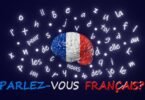Envisioning Knowledge: How Visual Thinking Improves Comprehension
Why Visual Explanations Resonate With Learners
Visualizing concepts offers unique benefits. Seeing ideas depicted spatially allows learners to recognize interconnections in a manner words alone struggle to convey. Whether grasping complex systems or memorizing lists, visual tools assist in ways verbal explanations cannot match. Learning Through Visualization and Imagery This section explores how sight actualizing knowledge aids understanding and retention far beyond simply listening or reading about a topic.
The Brain on Images
The brain processes images differently than text, utilizing distinct regions optimized for visual perception. Capitalizing on these specialized areas enhances how learners ingest and bond with new information.
Demonstrating Concepts in the Classroom
Effective instructors recognize conveying material visually supports varied learning styles and reinforces multi-sensory absorption. Well-crafted diagrams, graphs, and other visual aids bring arid theories to life when explaining challenging ideas.
Optimizing Eye-Catching Expositions
For visuals to benefit comprehension, they must attract and actively engage observers. Guiding design principles like clarity, simplicity, and relevance maximize educational impact through illustrations crafted to intrigue as well as inform diverse audiences.
Strategies for Converting Knowledge to Vivid Depictions
Webbing Relationships in Mind Maps
Clustering related details around central themes in a graphical, radial layout aid in organizing scattered notes and perceiving how facts interconnect an incomparable study boon.
Flowcharts and Sketching Workflows
Representing processes step-by-step through graphic sequences or annotated diagrams fosters following involved sequences logically while committing them to memory.
Visual Study Methods
Techniques like enhancing written outlines with colors and images; compiling pictures connecting key points; and recreating diagrams transform standard notecards into highly efficacious memory joggers when revising for exams.
Harnessing the Power of Mental Imagery
Envisioning Concepts Strengthens Imprint on Mind
Actively visualizing abstract principles and concrete procedures embeds them deeper in the brain by forming dual-coded symbolic and sensory representations less prone to slip from the mind.
Mnemonic Devices Amplify Recall
Applying visualization-based mnemonics like acronyms linking initial letters to vivid scenarios or inventing mental imagery from initials powerfully boosts retention by linking information to mental snapshots.
Embodied Cognition and Imprinting Learning
Research indicates simulating experiences through visualization activates similar brain regions as physical actions, making reproduced knowledge easier to retrieve later on.
Customizing Visual Learning
Diagnosing Personal Visual Learning Tendencies
Assessing natural inclinations regarding preferred visual learning modes like reading charts or creating graphic representations aids in applying customized solutions.
Adapting Visual Notetaking
Adapting notetaking to personal visualization tendencies, whether illustrating abstract notes or supplementing outlines with relevant images enhances individual understanding.
In Conclusion, Visualization Catalyzes Comprehension
In sum, rendering abstract ideas and procedures in visual form powerfully amplifies understanding by stimulating underutilized regions of the brain specialized for processing imagery. Learners should apply visualization methods matched to personal strengths to maximize retention of even intricate or unengaging materials.
Transforming Knowledge through Visual Means
Capturing concepts visually supports diverse learning approaches and bolsters retention far above relying exclusively on words. Deliberate tactics foster translating information into mental images and graphic expressions amplifying comprehension.
Mind Maps for Organizing Complex Relationships
Networking related notions around central themes through radial, graphical layout aids in organizing spread thoughts and perceiving interconnections challenging to reveal through sequences. Clustering associated branches around key ideas fosters an intuitive grasp of sophisticated subjects.
Diagrams and Schematics for Procedural Processes
Delineating step-wise workflows or systemic structures through visual sequences and annotated sketches promotes following complex procedures logically while committing them to memory. Outlining abstruse mechanisms visually enhances understanding of intricacies that verbal explanations struggle to convey.
Enhancing Expository Notes with Complementary Images
Techniques like compiling relevant photos connecting pivotal points; emphasizing maps, flow charts, or graphs inserted between standard notecards; and recreating core diagrams bolster the retention of elaborate materials. Pairing descriptions with germane visual aids transforms perfunctory notes into rich study supplements.
Transforming Abstract Concepts via Mental Imagery
Visualizing conceptual notions embeds them deeper cognitively by stimulating underused brain areas specialized for imagery. Strategies like associating principles with striking imagery assist in retaining otherwise nebulous ideas better than verbal designations alone.
Optimizing Personal Visual Learning Approaches
Assessing inherent inclinations toward graphic or pictorial interpretation identifies modalities maximizing comprehension. Adapting notation or study habits towards natural visual propensities personalizes solutions enhancing individual grasp. Overall, thoughtfully applying visualization widens accessible evidence transforming abstractions into clear representations.
Harnessing the Power of Mental Projection
Invoking visual representations strengthens imprinting abstract ideas and empirical procedures in memory. Deliberately constructing mental images connects information multidimensionally to perception areas supplementing rote verbal encodings. Strategies like the following leverage the brain’s imaging abilities:
Envisioning Concepts Enhances Conceptual Models
Actively visualizing principles shape conceptual frameworks by forming paired linguistic and visual associations. This dual encoding embedding notions in two formats buttresses retention better than sole words alone. Complex but intangible ideas solidify through personalized pictorial renderings.
Mnemonic Strategies Boost Recall Through Imagery
Applying visualization-based mnemonics like imagining scenarios from initials or envisioning acronyms as word pictures potently improve retrieval by connecting data points to vivid mental snapshots. These Memory strategies strengthen limp encodings by generating robust multi-sensory embeddings.
Embodied Cognition Principles and Visual Simulation
Research indicates simulating experiences through visualization activates analogous brain areas as physical actions. This embodied cognition makes reproduced learning more readily accessible later on. Visually pretending scenarios relate knowledge to perceptual schemas cementing understanding.
Customizing Visual Approaches
Assessing natural artistic or graphic tendencies aids in applying customized visualization solutions to optimize individual comprehension. Adapting study habits and notetaking format to embrace inherent visual learning inclinations enhances effective knowledge construction. Overall, thoughtfully designing visual approaches tailored to each learner personalizes solutions maximizing insight.
Optimizing Visual Learning for Individual Needs
Thoughtfully selecting visualization methods aligned with personal proclivities empowers taking charge of one’s education through customized solutions. Assessing innate visual cognitive styles and proactively adapting techniques supports autonomous knowledge acquisition.
Diagnosing Visual Learning Tendencies
Evaluating whether pictorial or graphic renderings come more naturally aids in choosing the most beneficial strategies. Do diagrams clarify easily or do photographs trigger stronger associations? Insights into visual cognitive preferences inform optimized routes.
Adapting Note-Taking for Visual Preferences
Supplementing outlines with relevant sketches or inserting diagrams within points caters to diagrammatic inclinations. Those favoring photos can compile visual study guides. Integrating favored visual elements into study rituals enhances individual grasp far above one-size-fits-all approaches.
In Conclusion, Customized Visual Learning Catalyzes Insight
Maximizing visualization’s benefits demands tailored solutions. By introspectively analyzing inherent visual cognitive proclivities and proactively adapting visualization methods accordingly, individual learners empower autonomous knowledge construction optimized for their needs. Creatively rendering information to suit personal visual learning tendencies boosts comprehension above relying on rote memorization alone.






